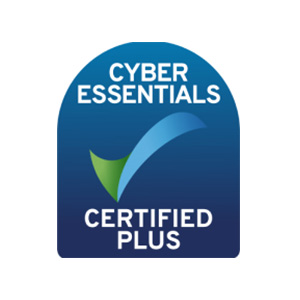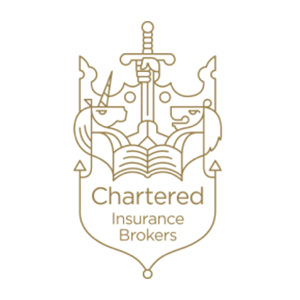As we see the 2024 insurance market plateau and begin to reduce in some areas, there is a distinction between insurance in the Higher Education sector and the wider market. Even within the sector there are differences between specific classes of insurance, and the current changes offer opportunities to optimise your insurance portfolio.
Are we at the top of the insurance market cycle?
The insurance market is cyclical, characterised by periods of soft and hard market conditions. A soft market is one in which you benefit from lower premium rates and increased capacity, meaning insurance is more readily available. Conversely, a hard market sees higher rates and reduced capacity, meaning cover is more challenging to find.
The market cycle is mainly driven by supply and demand; as insurers enter or leave the market, their willingness to offer capacity at a certain price will fluctuate.
We have seen sharp increases on rates and limitations on capacity since 2018 in line with a hard market, but we are now arguably at the top of the market cycle. Liability, Cyber and D&O are experiencing differing degrees of reductions as we enter a softer market.
Property and Professional Indemnity remain challenging due to claims and capacity shortage. Motor insurance is still being impacted by cost of claims inflation due to increased numbers of electric cars and supply chain challenges globally.
The travel insurance market, which is generally a significant area of focus for University insurance managers, is driven by the claims experience of each individual university as well as travel patterns now returning to what they were prior to the Covid-19 pandemic. There does however remain sufficient competition to secure positive renewal outcomes, particularly with the support of strategic guidance from an experienced broker.
Which classes of insurance remain challenging for universities?
Property insurance: Unique risks and market dynamics
Why is Higher Education (HE) property different to the general property market?
Typical university campuses can be made up of large owned estates with numerous buildings of various construction materials, age, uses and occupancy. This complexity distinguishes higher education property risks from general market risks.
The withdrawal of key players like Zurich Municipal (ZM) (for large Universities) has further strained the market, leading to increased co-insurance and layered policies. This, in turn, has limited competition amongst other insurers as well as reducing capacity across the market as they took on the legacy ZM risks.
We regularly see more coinsurance and layering of policies, which brings about more complexity where multiple insurers share a risk.
Additionally, inflation has driven up reinstatement values and estate investment costs, exacerbating the situation. Higher excesses have been imposed over recent years as rates have risen, and whilst the HE market has lagged behind the general market, we are now seeing new entrants meaning rates are starting to level off.
Professional Indemnity insurance: Limited capacity and high stakes
What specific challenges are limiting insurer appetite in the PI market?
The market has been dominated by a small number of providers and these insurers have introduced higher excesses and specific cover restrictions at the same time as increasing premiums. The introduction of per student excesses and restrictions on cover for unaccredited courses will be of particular relevance.
Despite rates rising, there remains relatively limited competition for primary capacity partly due to the claims environment. The student group claim has stalled and created concerns within the market about the potential for group action from cohorts of students, in addition to existing concerns around large research related claims and failure claims.
What strategies can I use to navigate a hard Higher Education insurance market?
Evaluating routes to market – Choosing the right procurement approach is crucial. Whether through broker-led market exercises or formal tender processes, each has distinct advantages. Frameworks like CCS can streamline access to pre-qualified insurers, though they may exclude newer entrants. Conversely, broker-led approaches can provide flexibility and tailored solutions.
Enhancing risk information – Clear, comprehensive risk presentations are vital. Detailed surveys, construction details, and up-to-date claims data can positively influence underwriters’ perceptions, potentially leading to better terms and rates.
Reflecting on claims – Performance and cleansing of your data to ensure it is as up to date and accurate as possible will reap rewards. Articulating positive messages about lessons learned or changes to your risk such as disposed sites or different working practices will help underwriters take a more positive view.
Leveraging long-term agreements – Whilst these are generally not available for Professional Indemnity and Financial Lines covers, where they are available on Property policies, insurers are still looking for premium rate escalators which should be resisted given the current phase in the cycle. Scrutiny of deal wordings including cut-off date, loss ratio criteria and potential impact on future rates is important to set expectations for subsequent years. The timing of any new deals should be considered carefully in comparison to the prevailing rate an institution is paying, claims performance and the dates that current deals are due to expire.
Investigating options – To aid decision making we challenge the status quo to give clients choice in how to cut their cloth to suit their budget. This can include alternative excess structure, reviewing loss limits, coinsurance, or a layered programme. Availability of low claim rebates should be discussed, and it can be worth investing time with ‘plan B’ insurers – especially where there is limited capacity.
Proactive insurance management tips
- Plan for renewal: Early engagement with insurers and brokers can ensure a smooth renewal process
- Explore alternatives: Consider alternative excess structures, loss limits, and layered programs to find the most cost-effective solutions
- Use frameworks wisely: Balance the benefits of formal frameworks with the flexibility of direct broker negotiations to access a broader market
- Focus on claims performance: Maintaining accurate and positive claims data can enhance your negotiating position
Why should I partner with Griffiths & Armour?
As you navigate the complexities of the current insurance market, our expertise in the higher education sector ensures that we understand your unique risks and can help you achieve the best possible outcomes.
Contact us to discuss how we can assist in optimising your insurance programme as the summer renewal season approaches and we are happy to act as a sounding board as your renewal progresses.










